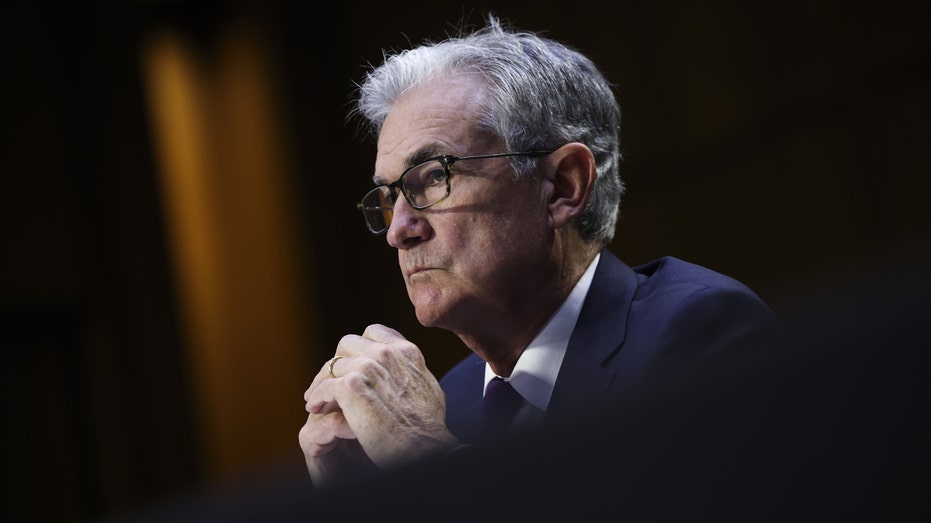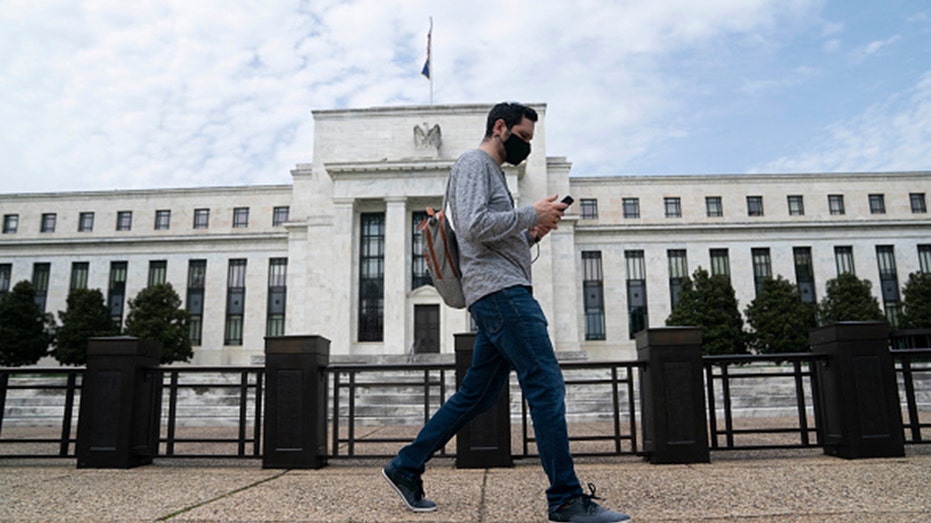Recession indicator flashes red as parts of yield curve invert for first time since 2006
Spread between 5-year, 30-year Treasury yields briefly inverted on Monday
Federal Reserve facing recession or runaway inflation
UBS managing director and senior portfolio manager Jason Katz discusses his outlook for the Fed and markets.
One of Wall Street’s favorite indicators of an impending recession is flashing red, sparking fresh concern that the U.S. economy is on track for a downturn this year.
The spread between the 5-year and 30-year Treasury yields briefly inverted on Monday for the first time since 2006 on fears that the Federal Reserve's aggressive approach to tackling the hottest inflation in four decades could lead to a sustained slowdown in growth.
FED RAISES INTEREST RATES FOR FIRST TIME IN 3 YEARS, PROJECTS 6 MORE HIKES AS INFLATION SOARS
Yields on the 5-year Treasury note climbed as high as 2.63% on Monday, rising above those on 30-year bonds (which fell to about 2.60%). The spread between the 5-year and 10-year Treasury inverted earlier this month.

Jerome Powell, chairman of the U.S. Federal Reserve, during a Senate Banking, Housing and Urban Affairs Committee hearing in Washington on Sept. 28, 2021. (Kevin Dietsch/Getty Images/Bloomberg via Getty Images / Getty Images)
Yield curve inversions, which are rare, are viewed as a good recession predictor because it suggests that investors believe – with the interest rate on long-term bonds lower than the rate on short-term bonds – economic growth is slowing.
"Markets are fixated on the U.S. Treasury yield curve as it is considered an excellent gauge of the economy," said Anu Gaggar, global investment strategist for Commonwealth Financial Network. "If the economy is healthy and growing, longer-term Treasury rates should be higher than shorter-term rates. When the reverse happens, concerns start to mount about the future state of the economy."
The more closely watched spread between the 2- and 10-year note yields is also narrowing, falling from a high of 1.56% to less than 0.2% in the span of just one year. That is the flattest the spread has been in two years, before the pandemic took hold and triggered an extremely deep but short recession.
Every recession in the past 60 years was preceded by an inverted yield curve, according to research from the Federal Reserve Bank of San Francisco.
The bond market movement comes as the Fed takes a more hawkish approach to fight inflation: Policymakers raised rates by a quarter-percentage point two weeks ago, and have since signaled support for a faster, half-percentage point increase at their May meeting.

A man walks past the U.S. Federal Reserve building in Washington on April 29, 2020. (Xinhua/Liu Jie via Getty Images / Getty Images)
"If we conclude that it is appropriate to move more aggressively by raising the federal funds rate by more than 25 basis points at a meeting or meetings, we will do so," Chairman Jerome Powell said last week during an economics conference. "And if we determine that we need to tighten beyond common measures of neutral and into a more restrictive stance, we will do that as well."
The Labor Department reported earlier this month that the consumer price index rose 7.9% in February from the previous year, marking the fastest increase since January 1982, when inflation hit 8.4%. The CPI – which measures a bevy of goods ranging from gasoline to health care – rose 0.8% from January.
Some economists believe the Fed waited too long to confront the burst in inflation, while others have expressed concerns that moving too quickly to stabilize prices risks triggering an economic recession. Hiking interest rates tends to create higher rates on consumers and business loans, which slows the economy by forcing employers to cut back on spending.
GET FOX BUSINESS ON THE GO BY CLICKING HERE
Still, Powell has pushed back against concern that an inverted yield curve signals the economy is headed for a recession and maintained optimism that the Fed can strike a delicate balance between taming inflation without crushing the economy.
"The probability of a recession in the next year is not particularly elevated," Powell told reporters two weeks ago, citing the strong labor market, solid payroll growth and strong business and household balance sheets. "All signs are that this is a strong economy, and one that will be able to flourish in the face of less accommodative monetary policy."





















